If you’ve ever started a hike wearing too many clothes, you know that dressing too warmly can ultimately make you as cold as if you’d worn too little. With too much heat trapped next to your skin, you quickly overheat and work up a sweat. Then, when you stop moving, the moisture starts to cool, pasting your inner layers to your skin and robbing you of much needed warmth. In less severe conditions, this heat drain might only bring on an uncomfortable chill, but in freezing conditions, it can actually put you in danger of hypothermia. To avoid such a scenario, experienced outdoorsmen practise something called layering – a tried and tested strategy that involves regulating one’s body temperature by adding and removing layers as the weather and exertion levels change. The ultimate goal is to keep you warm, dry, and comfortable, and to do that, your outdoor apparel has to do three things:
- Wick away moisture (base layer)
- Trap enough heat (middle layer)
- Keep out rain and snow (outer layer)
This might sound simple enough, but it’s not quite as straightforward as throwing a rain jacket over a pullover and T-shirt. To make the most of a layering system, you need to know what to wear, when to wear it, and how to wear it. But that’s why you're reading this article – to learn how to effectively layer your active wear so that you stay comfortable and dry regardless of whether you’re going for a trail run, climbing a frozen waterfall, or just relaxing by the campfire.
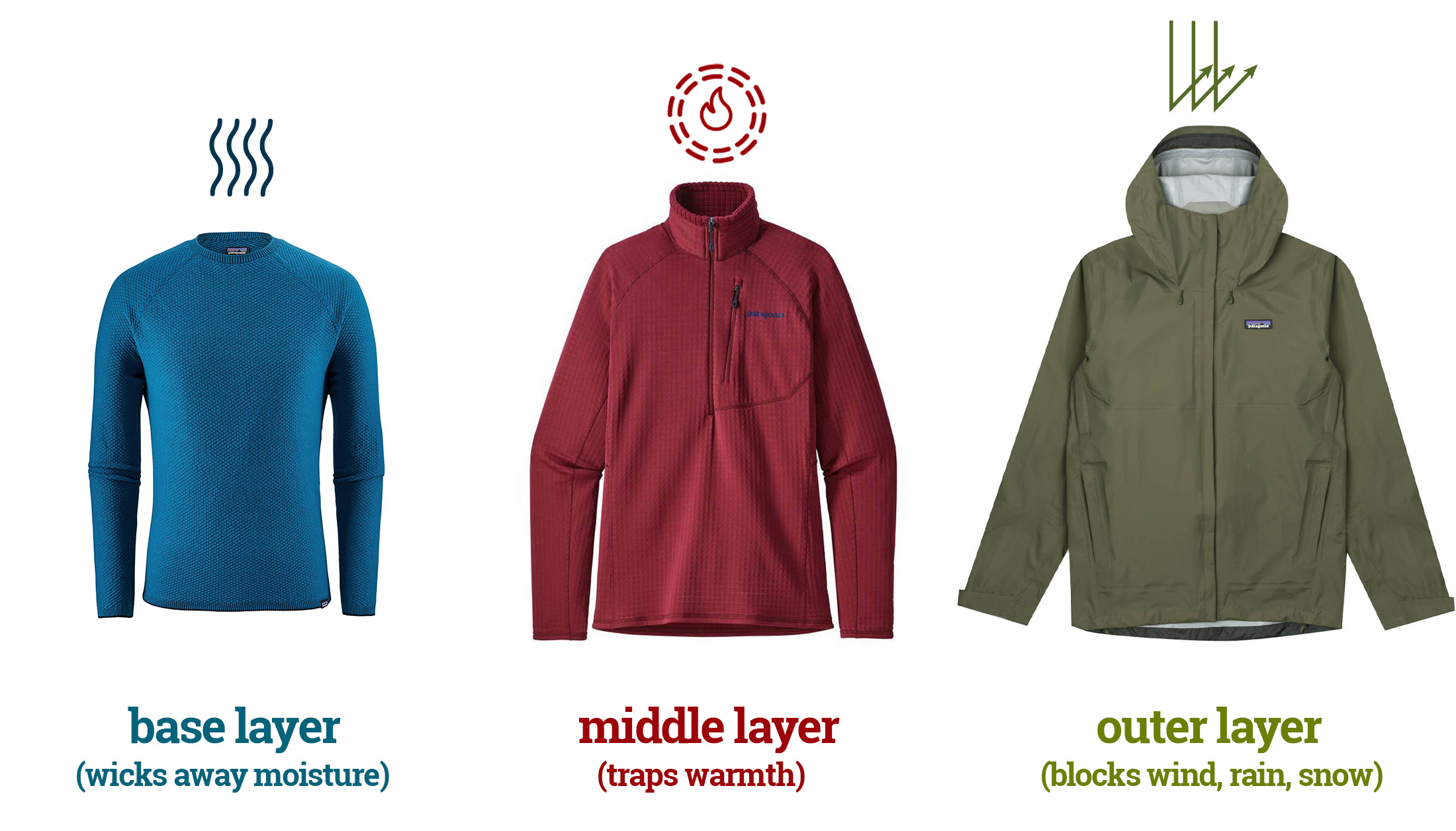
Base layer
Traditionally ‘base layer’ has been used to refer to long-sleeve, skin hugging garments, but this definition is too restrictive. A base layer is anything that you have next to your skin, so that includes your underwear and a T-shirt if you’re wearing one. Regardless of the type of clothing, a base layer garment has to draw perspiration away from the skin, where moisture could cause a chill as soon as you stop moving. To this end, base layers (including bras and briefs) should be made of moisture-wicking and quick drying fabrics like polyester, polypropylene, and merino wool. Cotton, which is non-insulating and holds moisture, is a complete no-no.
Warm-weather base layers
On a warm summer’s day a T-shirt or loose fitting long sleeve shirt is best for keeping your cool. If you find you need a little more warmth but aren’t ready to add a midlayer, you can still put on a long-sleeve base layer top under your T-shirt. Like the form-fitting garments sold as base layers, T-shirts and long sleeve shirts should also be made of a quick drying and lightweight material (usually synthetic) to ensure they help you stay dry even when you work up a sweat. And if you’re going to be spending hours out in the sun wearing little more than that shirt, you should also ensure that it has a UPF rating (protects you from UV rays).
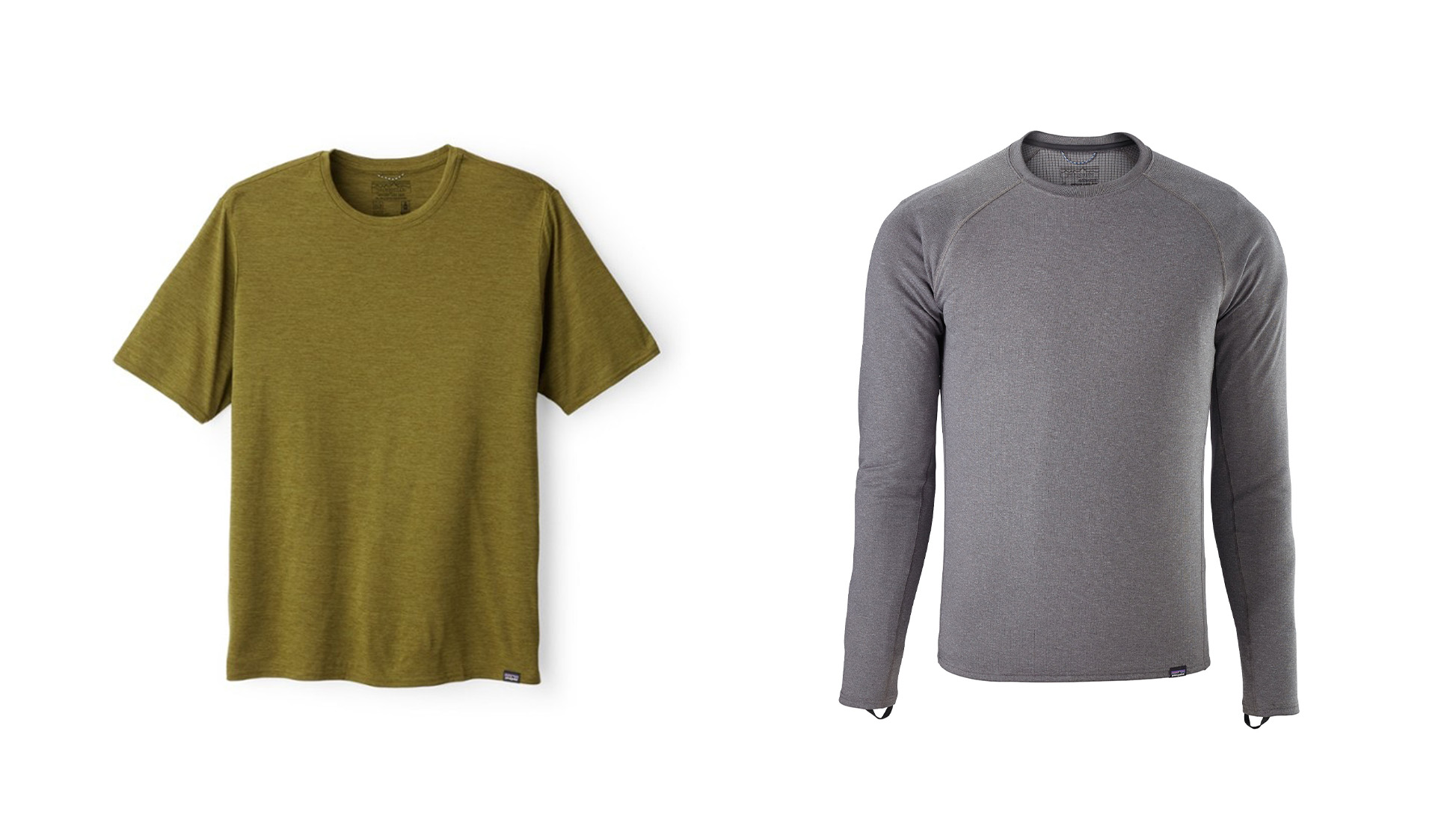
Cold-weather base layers
Long sleeve base layers come in lightweight, midweight, and heavyweight. The right choice for your circumstances will depend on the ambient air temperature and on how active you’re going to be. In moderate to cool temps, a lightweight top will suffice, while winter sports might call for a mid-weight top and long johns. I’d only pull on heavyweight thermal underwear if I was going out in freezing temps and wasn’t going to be doing anything to warm myself up. Regardless of the weight, these body-hugging base garments should be seamless or at least flat-seamed so that they don’t chafe or create hot spots under the weight of a pack or heavy outer layers.
Middle layer
In the typical three-layer clothing system, the middle layer is designed to provide insulation. But the amount of insulation varies greatly as can your needs. If it was very cold and you were very inactive, you’d need something with plenty of loft, whereas aerobic activities in milder temps might only call for a lightweight fleece.
Fleece midlayer
As a middle layer, fleece wins on three fronts: It’s very breathable and effective at wicking moisture away from inner layers; it stays warm even when damp; and it dries quickly. The downsides are that it’s not windproof or waterproof, but that’s why it’s intended as a mid layer and not an outer layer. Fleeces can be lightweight, mid weight or heavy weight (100, 200 or 300 weight), and can be designed with a quarter zip, half zip, or full zip. With heavier fleece jackets, you’ll need a full zip to avoid overheating when you exert yourself. Personally, I prefer a light pullover as this gives me more options in a layering system.
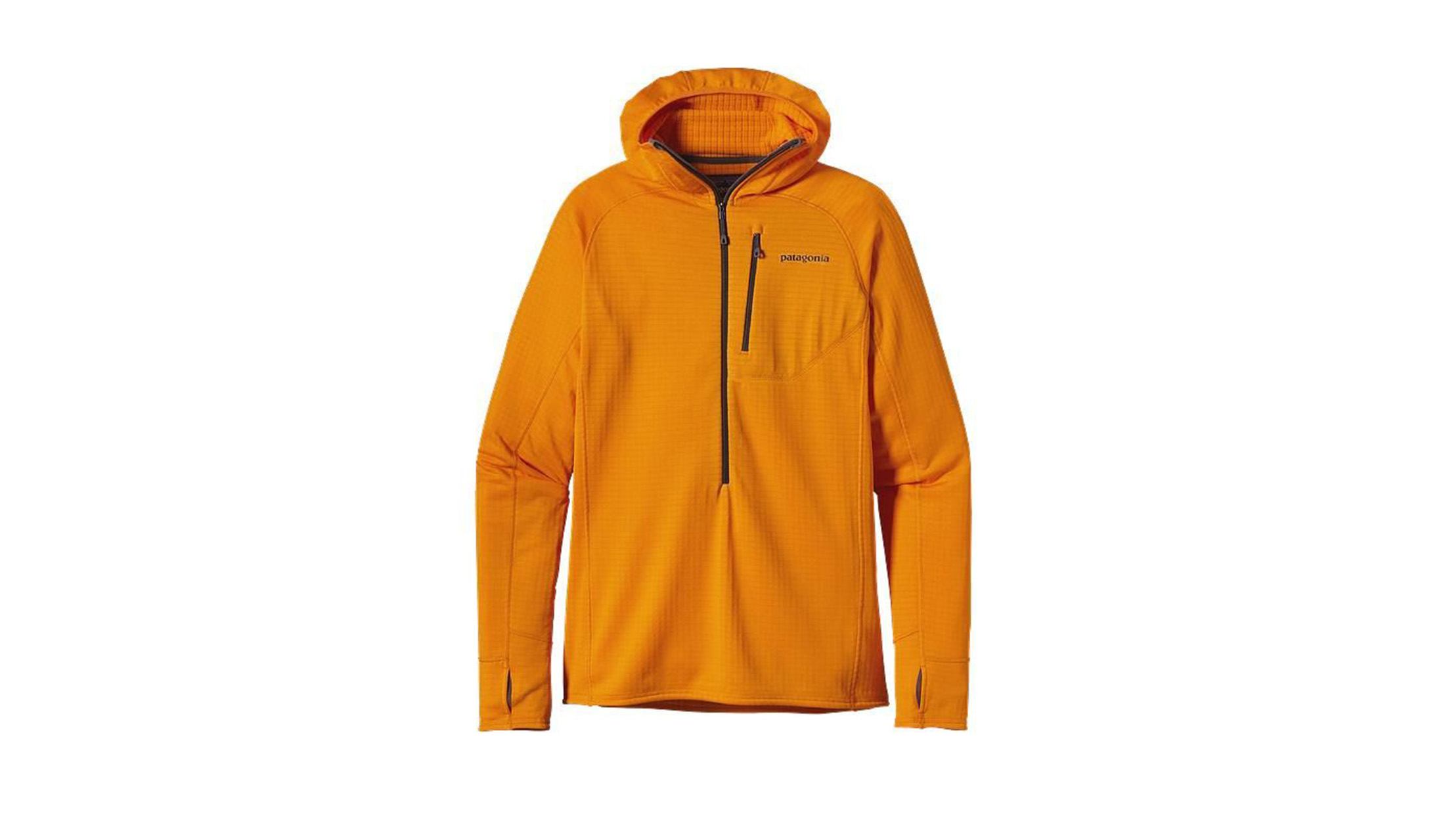
Merino midlayer
Merino wool is heavier than fleece or down, and it becomes even heavier when wet, making it a poor choice for fast and light missions and longer trips on which it will be difficult to dry out wet garments. However, this natural fiber is a good choice for shorter hikes and backpacking adventures. The main benefit of carrying a merino wool pullover on such excursions is that merino wool has anti-odour properties, and is unlikely to start smelling funky in that same time a synthetic garment would start taking on a life of its own.
Synthetic puffy jacket
Puffy jackets are very warm and are best reserved for periods of inactivity – like chilly belays and loafing around camp. Beyond that, it’s good to know that the different types of insulation (down and synthetic fill) have their own strengths and weaknesses, and perform best in different conditions. Although not as warm or light as down, synthetic insulation retains its insulating properties even when damp and dries faster, making it a better choice if you cannot guarantee that you’ll be able to keep your jacket dry. Premium synthetic fill like Primaloft Gold weighs about the same as low quality down and about 60 grams more than high-end down when used to fill the same jacket. Both down and synthetic jackets come in several styles: vest, jackets, and jackets with hoods.
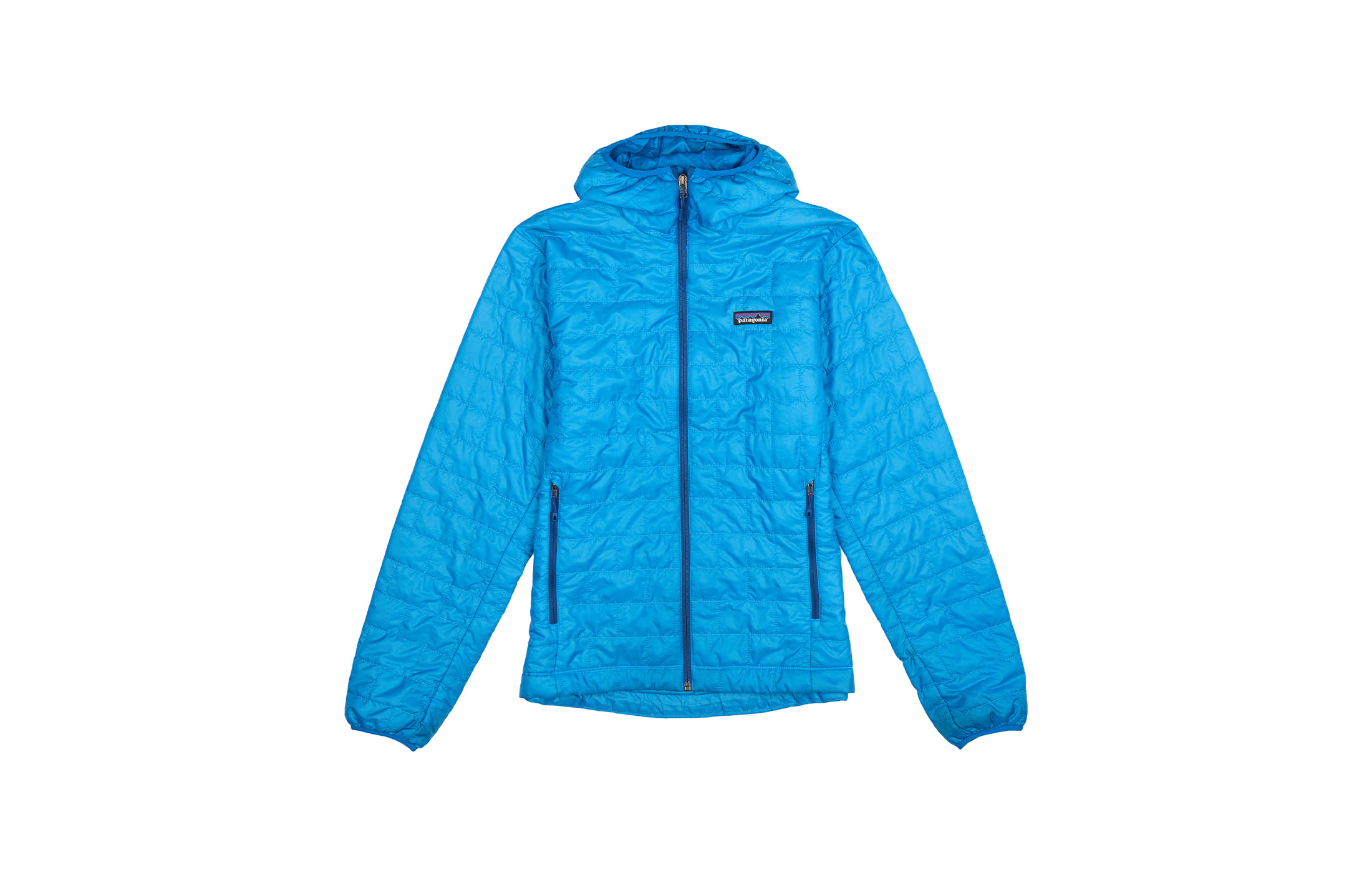
Down puffy jacket
Down offers more warmth per gram than any other material, and is highly compressible – a real space saver. However, this wonderful insulation is not without its downsides. The biggest drawback for many people is that it loses its insulating properties when wet, making it a poor choice if you expect to wear your jacket in anything more than a brief drizzle. Others will be put off by the fact that it is an animal product, although the Responsible Down Standard now makes it easier to identify gear filled with down that has been ethically sourced. The quality or warmth-to-weight ratio of down is specified as fill power. Down with a fill power of 900 is 50% lighter or warmer than down with a fill power of 600.
Outer layer
Worn over the middle layer or even just over the base layer, the outer layer is intended to protect you from the elements and trap heat in the inner layers. There are several types of out layer, each with a specific purpose.
Wind shells
The average wind shell weighs only a fraction of what a hardshell (3 – 5 oz) does and can squeeze into a stuff sack no bigger than a small potato. Of course, these lighter than light jackets won’t shed anything more than a drizzle, but then their intended purpose isn’t to see you through a monsoon shower. A wind shell, as the name suggests, is good for blocking wind and is a good outer layer to have with you if you’re trying to go light and you don’t anticipate rain or snow. Before you go ultralight with your outer layer, know what that gossamer thin minimalism will cost you in terms of functionality and durability. For a few ounces more, you can get a light rain jacket.
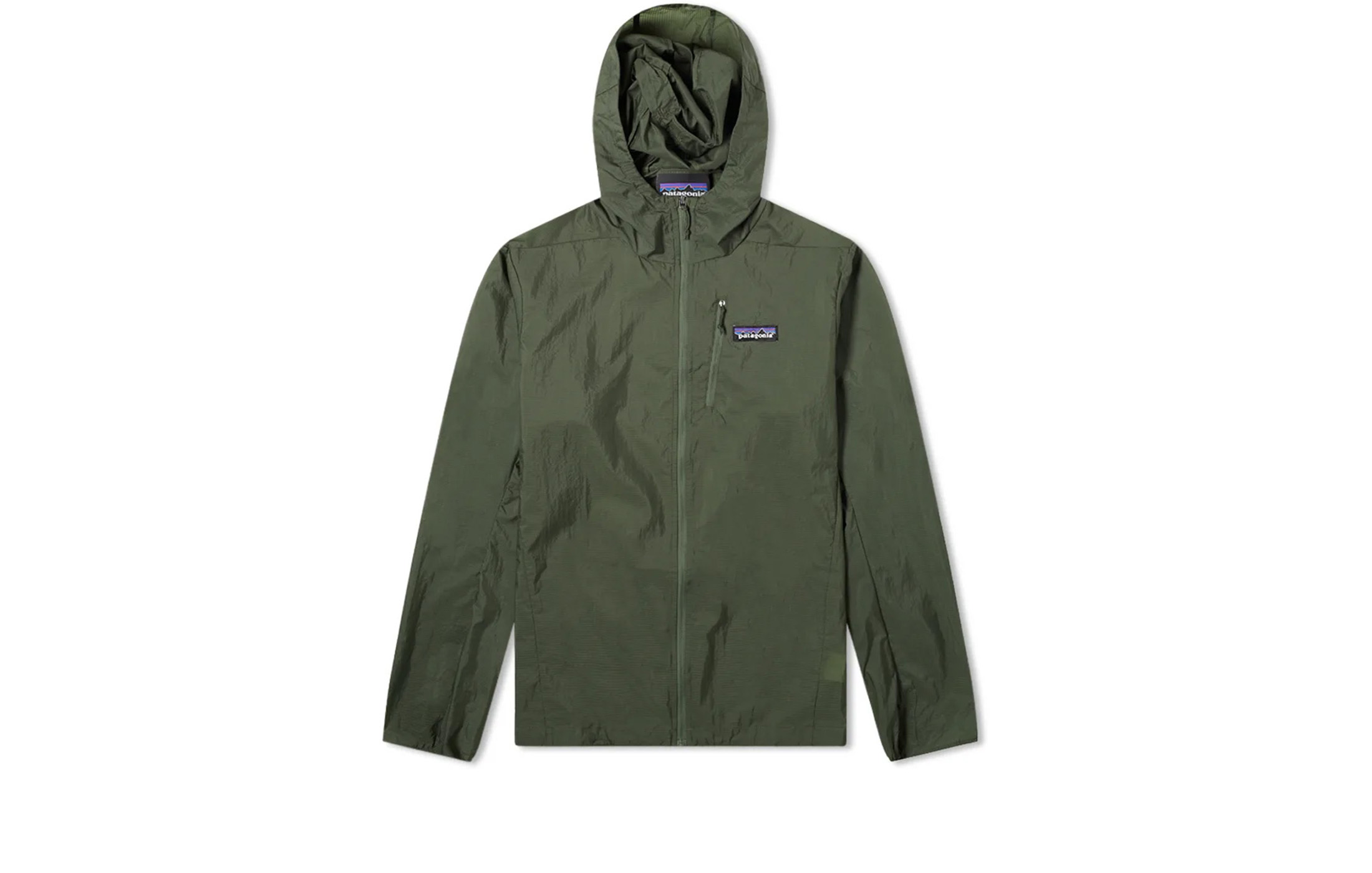
Rain shells
If you only expect the occasional downpour or sustained light rain, you can probably get by with a 2.5-layer or 2-layer rain shell. These aren’t as durable or breathable as hard shells, so they are more susceptible to sweat buildup, but they are also more affordable, making them a viable option if maximum performance is not a priority. If weight is important to you, look for a 2.5L jacket, which will lack the mesh lining found on the inside of 2L jackets. Beyond that, also give some thought to pit zip and vents. Rain shells can vary widely in terms of features, and you will want adequate ventilation if you are going to work up a sweat in your jacket.
Hard shells
If you expect snow or heavy rain, there’s no better type of outer layer than a hard shell. Almost all hard shells have a 3-layer construction with a waterproof membrane sandwiched between a durable outer layer and protective inner lining. Although the membrane is breathable, it doesn’t allow for nearly as much air flow as the fabric used in stretch-woven soft shells. To improve ventilation, most hard shells are designed with pit zips that can be opened when things start to get a bit sweaty. To round off their weatherproofing, these all-weather jackets typically come with welded seams, wrist and hem closures, and fully adjustable hoods.
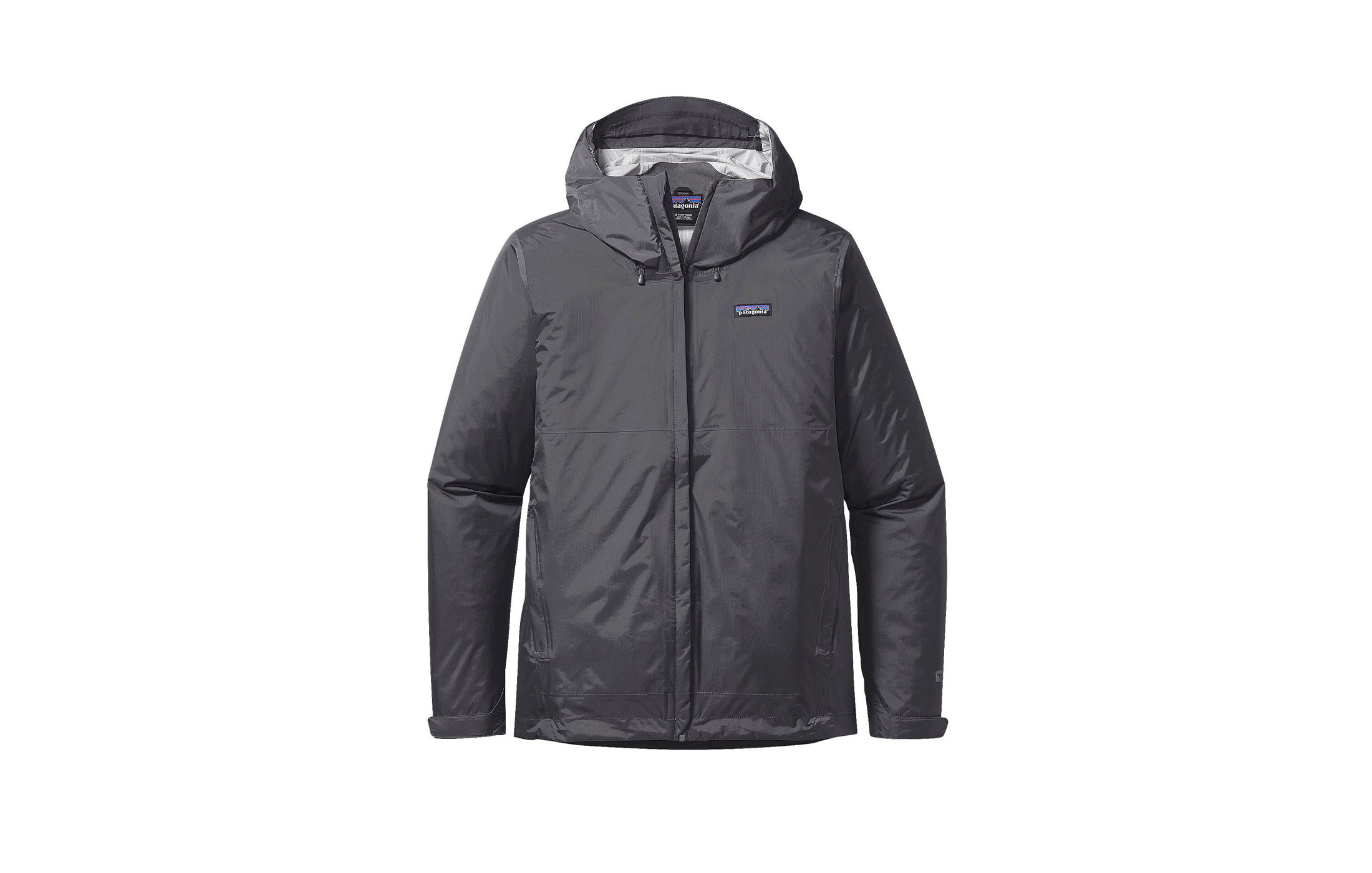
Soft shells
Unlike hard shells, which have a crinkly feeling to them, soft shells are made from woven fabrics that are stretchy and breathable. This gives soft shells an advantage in aerobic activities where freedom of movement and breathability are more important than absolute weather protection.The average soft shell will still stand up to light rain or snow, but it won’t come close to the protection offered by a hard shell. On the flip side, most softshells have an inner fleece lining and so offer a little more warmth and comfort than a hard shell. Like hard shells, soft shells range in weight from 340 to 510 grams (12 - 18 oz).
How to add and shed layers to regulate body temperature
In trying to stay warm and dry, you have to balance moisture management with heat retention and weather protection. There’s an art to this, and, like most arts, there are few hard and fast rules. How you combine your layers will depend largely on your needs and what you have to work with. That said, there is one rule you should stick to: always wear a base layer (even if it’s just a T-shirt) before you add a middle layer or outer layer. You don’t have to put on a middle layer before you put on an outer layer, and there’s no reason you can’t wear two of the same layer. But a base layer is essential for wicking away sweat and should always be worn before you add another item.
When working up a sweat
When hiking, running or biking, your primary objective is to avoid sweating, or, at least, to avoid sweating too much. The trick here is to be a little underdressed initially. It might be chilly at first, but you’ll warm up quickly as your muscles start to work. The other approach is to start dressed warmly and shed layers when you get too warm. There are two problems with the latter strategy. One is that you will warm up quickly and then put off shedding a layer until you’re already sweating.
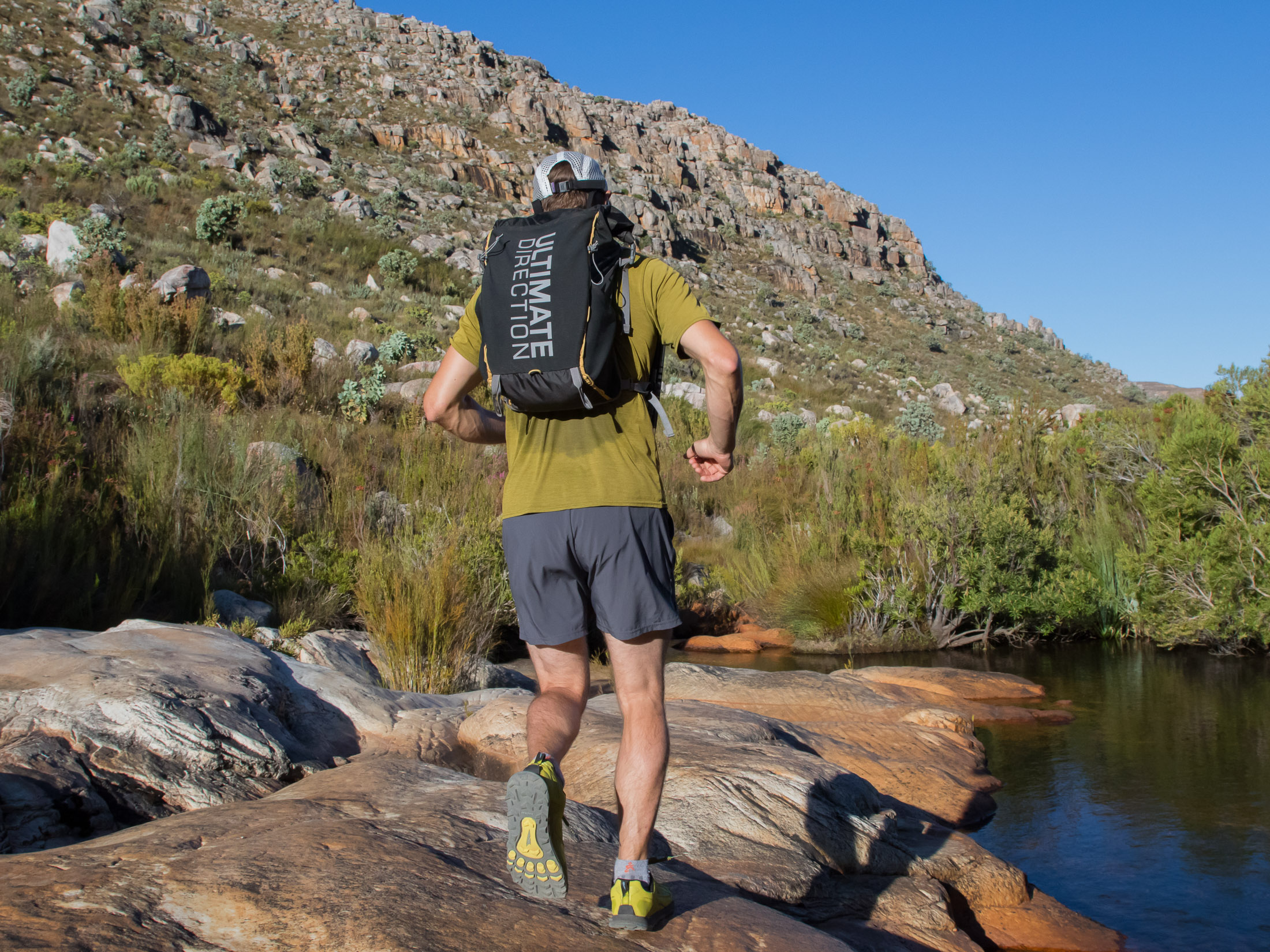
The second problem is that you don’t stop sweating the moment you lower the ambient temperature or intensity level. You can continue to perspire heavily for several minutes, soaking your base layer if the level of perspiration is too much for the fabric’s moisture-wicking capabilities. The end result of a damp base layer is clammy skin that chills as soon as you stop moving. Rather leave your warmer layers for when you stop moving and start to get cold.
Dealing with rain
‘Breathable’ is a relative term, and any waterproof jacket is a lot less breathable than a fleece or soft shell. When rain is heavy enough to warrant the use of a rain shell or hard shell, you need to take extra measures to ensure optimal moisture management. Firstly, if you’re wearing a middle layer, it would be a good idea to remove this before adding a shell. Your outer layer will trap some heat even if it doesn’t have an insulated lining.
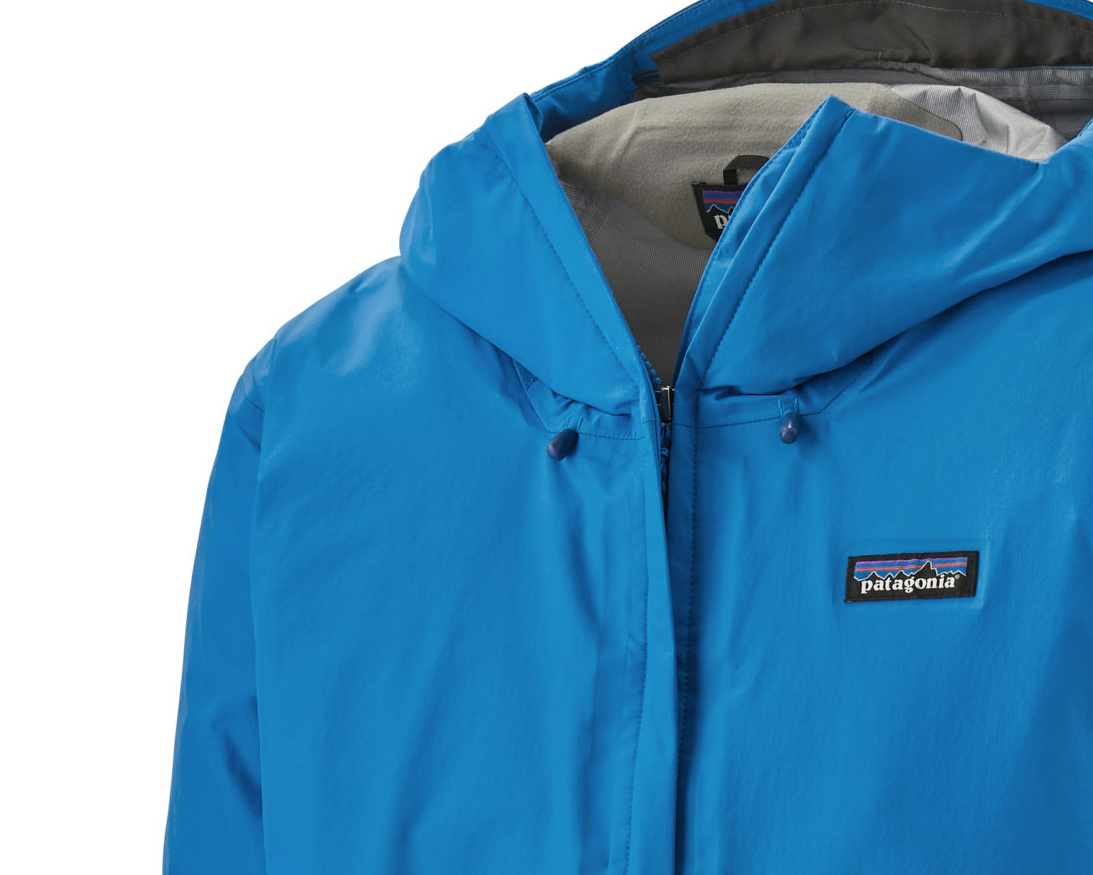
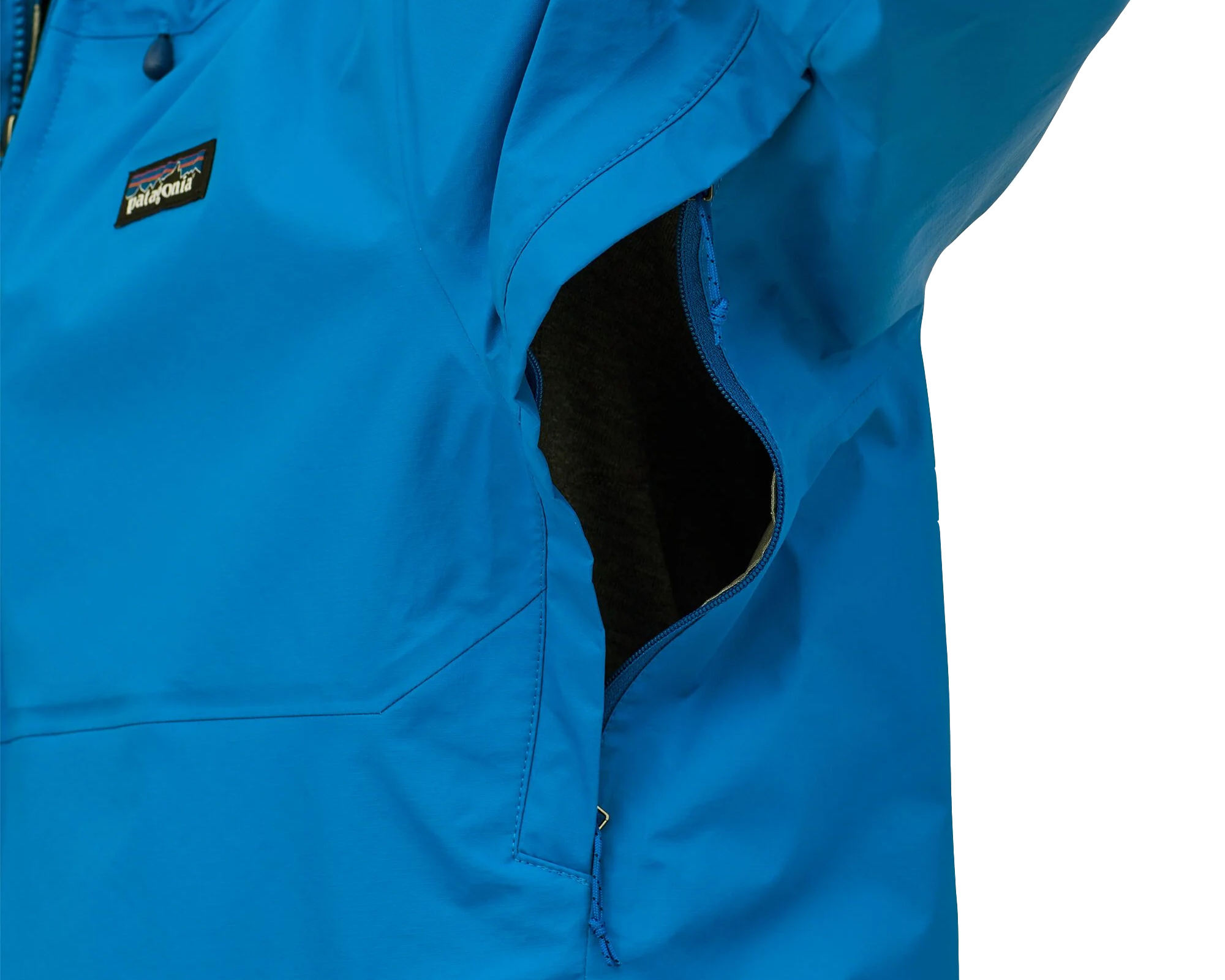
Secondly, you should take any opportunity – periods of lighter rain – to open pit zips and you chest zipper to improve ventilation. These vents allow for greater air flow than any breathable membrane and can stop your rainwear from becoming a sauna. Finally, you should always wear a long sleeve base layer or middle layer under a waterproof shell. Perspiration will collect between your skin and the fabric of your shell if there isn’t an inner layer to wick it away, and there’s little that’s worse than having cold fabric pasted onto your skin.
Warm and cold weather layering options
Again, much will depend on what you’re doing as well as the expected level of exertion. You’re not going to climb granite cheesegrater slab in your skimpy running shorts even if it is hot and sweaty. Still, the following can serve as useful guidelines on what to wear under certain conditions if you accept that you might have to change them up a bit for your activity.
Warm-weather layers
On warmer days a short-sleeved synthetic T-shirt or long sleeve UPF shirt is often the best base layer. If I expect that it will get a little cooler, I pack a lightweight long sleeve base layer to wear under the Tee. This versatile combination is usually enough by itself, but if I need an outer layer on top of this, I’ll pack a midweight fleece jacket (good for when you’re not moving) or a wind shell if the wind is my main concern. If I expect that I will want to climb in a layer that can take the nip out of the wind, I usually pack a light soft shell, which is more abrasion-resistant than a wind shell (still a good option if you only want to wear it while belaying) or a light fleece (not as wind-resistant).
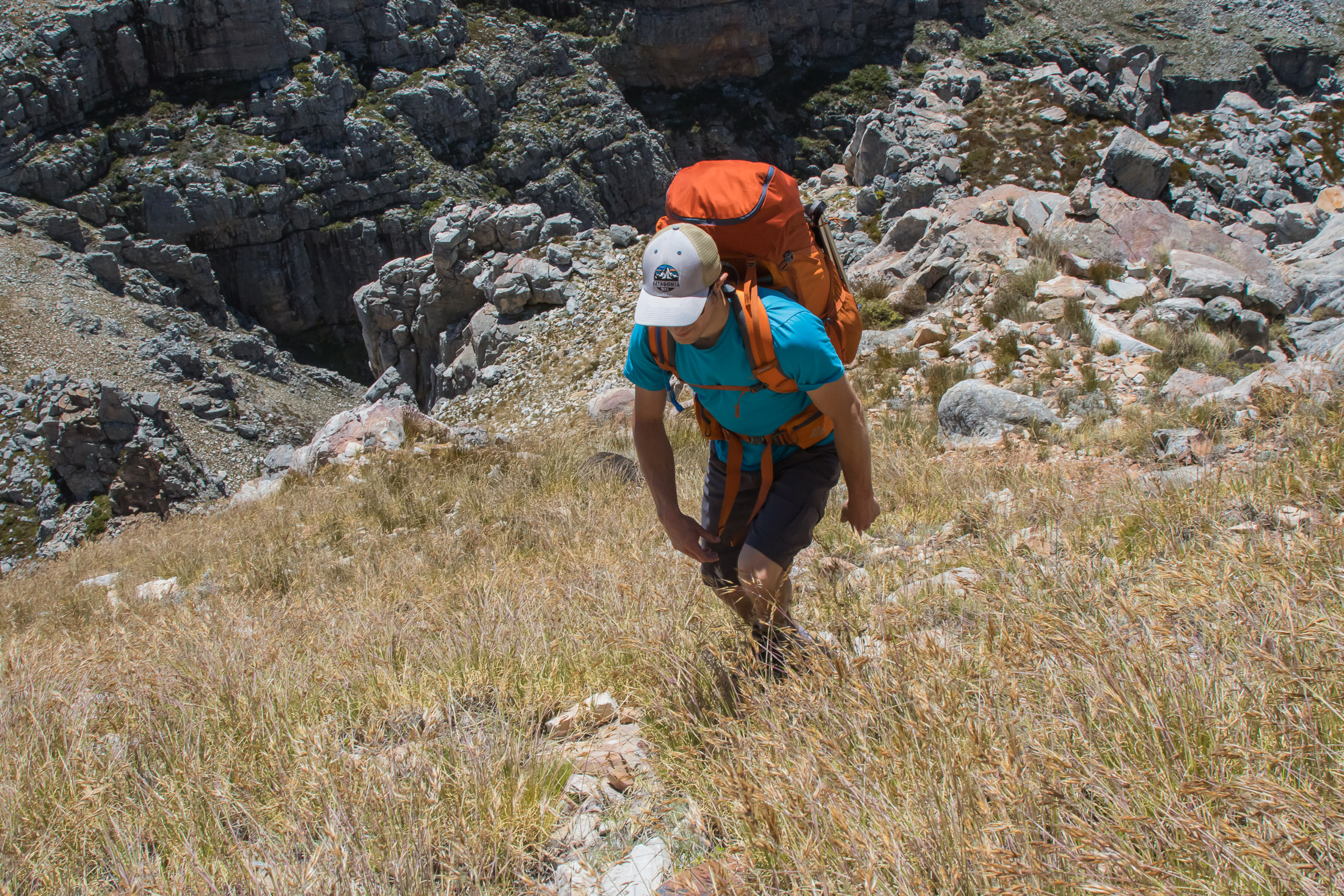
If there’s any chance of rain, I pack a rain shell, and If I’m doing an overnight hike, I also take a down jacket. This last item is one of the lightest and most versatile pieces of warm clothing I own, so I take it on almost every overnight adventure – even if it's only for the cooler evenings. For pants, I usually wear light hiking shorts or pants – convertibles are a good idea if you expect a wide temperature range in a single day.
Cold-weather layers
Colder weather can call for a pair of long base layer pants as well as a long sleeve base layer top. Depending on the activity, you could wear a pair of midweight hiking pants or possibly a pair of stretchy climbing jeans. On top it would be best to go with a lightweight to midweight base layer and then a fleece or soft shell – or both if you’re just standing around getting cold. If rain is in the forecast, pack a hard shell instead of a soft shell or even take both. With a base layer, fleece, soft shell, and hard shell, you should be ready for almost anything.
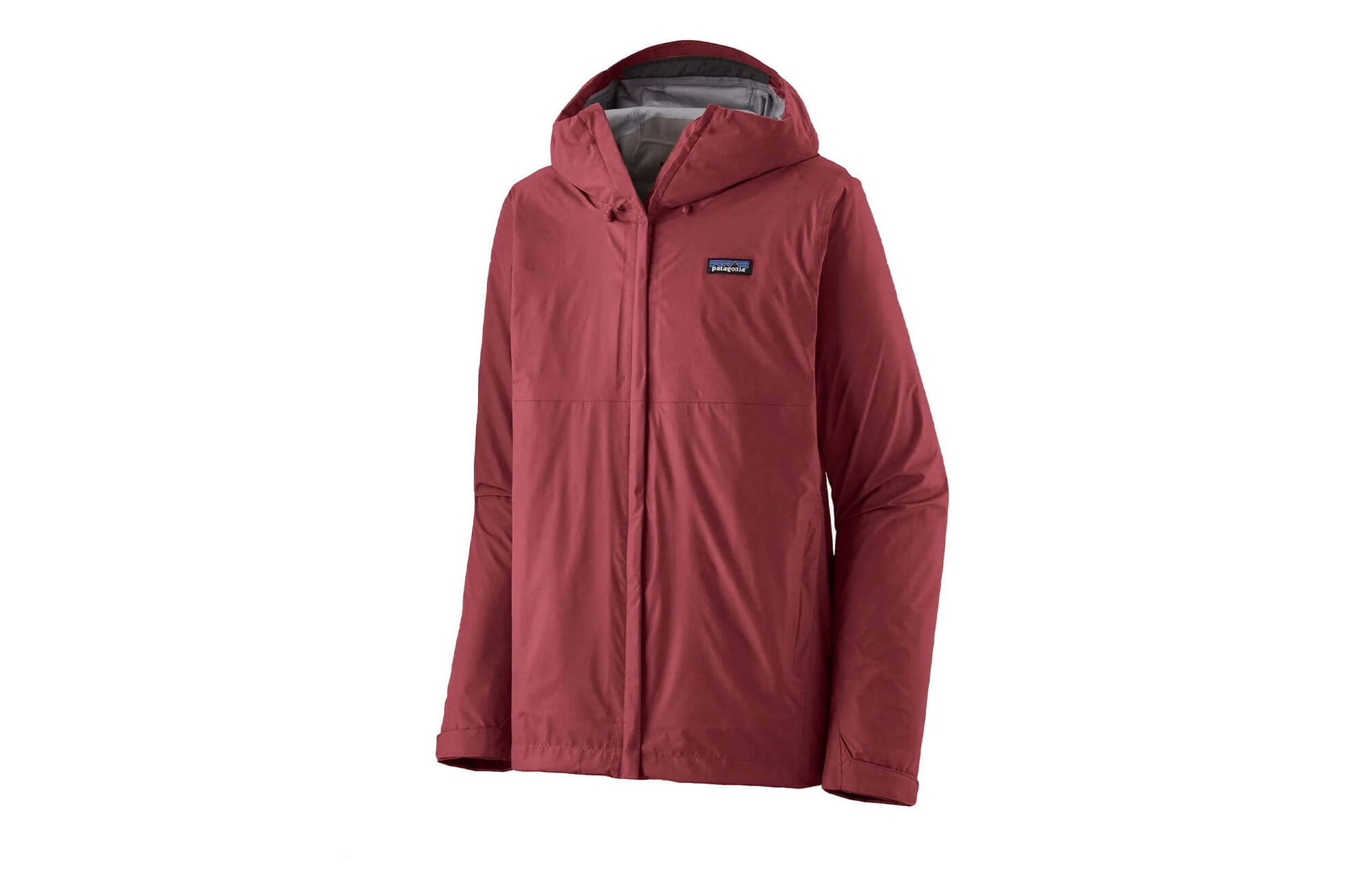
You can also use a down or synthetic insulated jacket instead of a soft shell if you need more warmth, but remember that a down jacket has to be kept dry if it’s going to keep you warm. Lastly, don’t forget your extremities. A lot of heat is lost through your head, hands and feet. Besides donning a warm hat and a pair of gloves, you should also consider putting on a second pair of woollen socks – if you have space for them. If adding an extra layer would restrict blood flow, it would be better to use toe warmers instead. Just don’t put these in ventilated shoes. Extra oxygen can make chemical warmers dangerously hot.
Get more advice from this gearhead
The best way to fine tune your layering system is to get out there and employ a little trial and error. With time and experience, you’ll learn how to combine your outdoor clothing in ways that will keep yourself warm and dry in any condition. That said, if it’s more information that you’re after, this site has many more articles on topics ranging from tarp rigging to backcountry cooking. You can find these under the different sections in the categories menu. Better yet, sign up for my newsletter to get all the latest from Trail & Crag delivered straight to your inbox.
